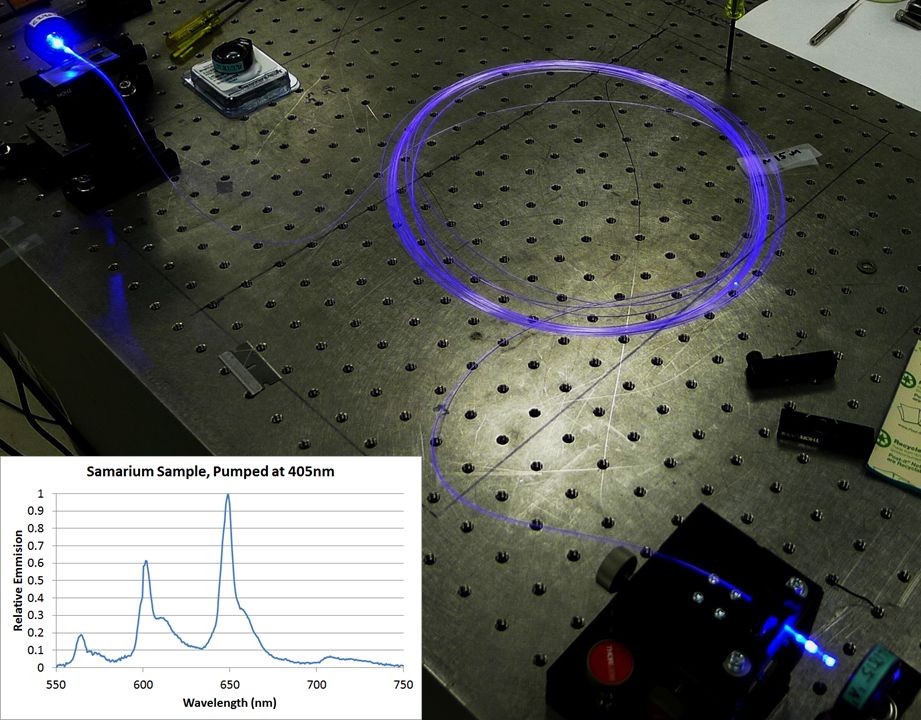Paul Pax (14-ERD-078)
Abstract
High-power lasers are at the core of defense applications such as directed-energy systems for missile or artillery defense, secure laser communications, and remote sensing. Fiber-based laser sources are natural candidates for these applications, offering unmatched beam quality, efficiency, thermal management, and reliability. However, the overwhelming majority of work on fiber lasers has been in the near- or mid-infrared region of the spectrum. Operation at shorter wavelengths has been overlooked, despite advantages such as beam control. Shorter wavelengths (i.e., visible versus infrared light) would reduce the size and the weight of a directed-energy device by a factor of four, or for fixed aperture, increase the power density on target by a factor of four. We plan to evaluate and demonstrate the prospects of novel short-wavelength fiber lasers. We will develop new materials, fabrication methods, and fiber designs; use new blue diode pumps; and push frequency conversion to high power. We will explore several approaches to extending high-power fiber-laser technology to short-wavelength operation. An important feature of our research will be the development of doped glass fabrication by the sol-gel method for producing solid materials from small molecules, which is not yet widely used in this application.
Developing approaches to extend high-power, fiber-laser technology to short-wavelength operation will improve or enable multiple defense applications, such as directed-energy systems and submarine communications. In addition, we will develop modeling and design expertise, develop new glass and fiber fabrication techniques applicable to the LLNL fiber optic draw tower, and gain expertise in high-power harmonic generation, all of which will position us for a lead role in kilowatt power scaling. We intend to evaluate three approaches: (1) novel active species lasing in the visible region, pumped with blue diodes; (2) neodymium-doped lasers at 900 nm; and (3) high power and efficiency frequency conversion. We will fabricate new fibers, test new lasers, and evaluate power scaling, building on existing LLNL resources and expertise.
Mission Relevance
High-power, short-wavelength fiber lasers will benefit defense technologies in support of a central Laboratory strategic mission in defense and a core competency in lasers and optical science and technology, specifically in the area of directed-energy systems and secure and covert communications. Success would also benefit nondefense applications, such as guide stars for astronomy and sources for high-brightness color displays.
FY15 Accomplishments and Results
In FY15 we (1) completed tests on the preform fiber supplied by our new vendor, evaluating fiber fabrication, waveguide properties, background losses, dopant characterization (Giles parameters), and double-clad fiber operation; (2) developed a formula for a first samarium-doped preform (starting material) fiber; (3) fabricated and shipped a second neodymium and a first samarium preform; (4) evaluated the samarium preform for background loss; (5) constructed a visible laser, pumped at 450 nm and emitting at 651 nm; and (6) updated our modeling code and benchmarked it by comparing to experiments.






